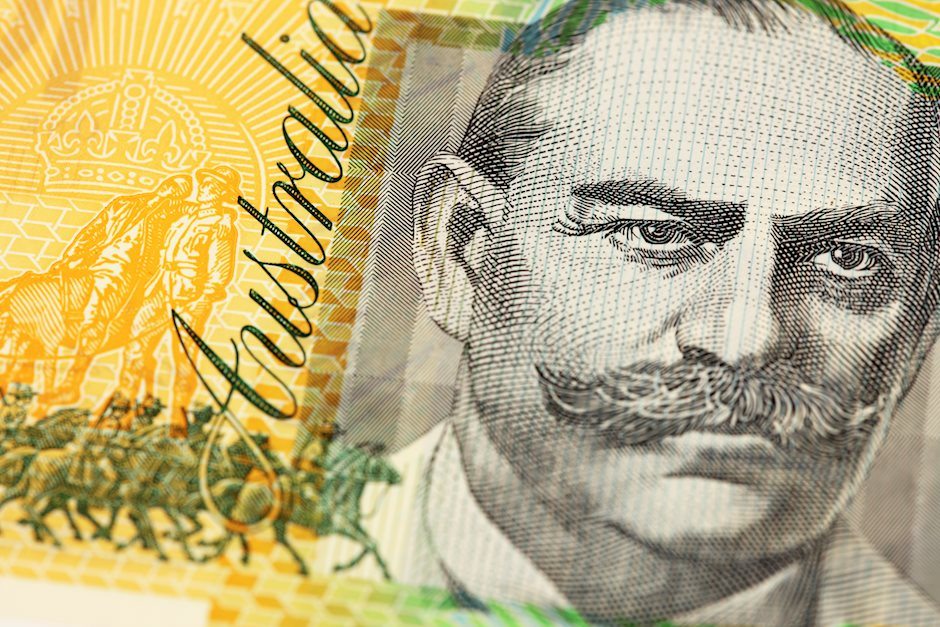Australian Dollar recovers as markets digest RBA's hawkish hold
- AUD got some momentum after RBA’s hawkish hold.
- Governor Lowe confirmed that the bank has no rush on rate cuts.
- Markets are now pricing in a 25 bps cut by year-end.

The AUD/USD pair is trading around 0.6500, up around 0.30% on the day. The Australian Dollar is benefiting from the Reserve Bank of Australia (RBA) hawkish hold. The RBA left its policy rate unchanged as expected on Tuesday, but Governor Philip Lowe said that no rate cut is on the table in the near term. This has helped to support the Australian Dollar, as it suggests that the RBA is not as dovish as some had expected.
Despite continuous high inflation rates, the data now presents considerable weaknesses in the Australian economy. This revelation has altered market expectations from anticipating a probable RBA rate hike to now considering a rate cut by the year-end.
Market Movers Daily Digest: AUD shows resilience as markets react to RBA's hawkish hold
- The Reserve Bank of Australia distinctly announced its decision to maintain the rates at 4.35%, emphasizing that "the Board is not ruling anything in or out."
- The RBA also stressed the necessity to stay alert for potential inflation risks.
- Notably, updated macro forecasts predict inflation will persist longer, with trimmed mean and headline CPI inflation anticipated to approach the midpoint of the 2-3% band by December 2026 as compared to the June 2026 forecasts in the earlier May forecasts.
- Dovish bets backed away, and markets are now only pricing in 25 bps of RBA easing in 2024.
AUD/USD technical analysis: Bearish sentiment persists, deceleration noted
The AUD/USD pair demonstrated continued fluctuations close to the 0.6500 level. The pair occasionally reflected resistance to the 0.6550 level and support at 0.6400. The trading volume remained steady in recent sessions, possibly indicating conservatism among the investors.
The Relative Strength Index (RSI) signals a consistent bearish momentum with readings ranging from 25 to 41 across the past few sessions. Concurrently, the Moving Average Convergence Divergence (MACD) depicted fewer red bars, hinting at a slow retraction in selling pressure. Therefore, investors need to closely monitor the mentioned support and resistance levels for a potential shift in momentum.
Central banks FAQs
Central Banks have a key mandate which is making sure that there is price stability in a country or region. Economies are constantly facing inflation or deflation when prices for certain goods and services are fluctuating. Constant rising prices for the same goods means inflation, constant lowered prices for the same goods means deflation. It is the task of the central bank to keep the demand in line by tweaking its policy rate. For the biggest central banks like the US Federal Reserve (Fed), the European Central Bank (ECB) or the Bank of England (BoE), the mandate is to keep inflation close to 2%.
A central bank has one important tool at its disposal to get inflation higher or lower, and that is by tweaking its benchmark policy rate, commonly known as interest rate. On pre-communicated moments, the central bank will issue a statement with its policy rate and provide additional reasoning on why it is either remaining or changing (cutting or hiking) it. Local banks will adjust their savings and lending rates accordingly, which in turn will make it either harder or easier for people to earn on their savings or for companies to take out loans and make investments in their businesses. When the central bank hikes interest rates substantially, this is called monetary tightening. When it is cutting its benchmark rate, it is called monetary easing.
A central bank is often politically independent. Members of the central bank policy board are passing through a series of panels and hearings before being appointed to a policy board seat. Each member in that board often has a certain conviction on how the central bank should control inflation and the subsequent monetary policy. Members that want a very loose monetary policy, with low rates and cheap lending, to boost the economy substantially while being content to see inflation slightly above 2%, are called ‘doves’. Members that rather want to see higher rates to reward savings and want to keep a lit on inflation at all time are called ‘hawks’ and will not rest until inflation is at or just below 2%.
Normally, there is a chairman or president who leads each meeting, needs to create a consensus between the hawks or doves and has his or her final say when it would come down to a vote split to avoid a 50-50 tie on whether the current policy should be adjusted. The chairman will deliver speeches which often can be followed live, where the current monetary stance and outlook is being communicated. A central bank will try to push forward its monetary policy without triggering violent swings in rates, equities, or its currency. All members of the central bank will channel their stance toward the markets in advance of a policy meeting event. A few days before a policy meeting takes place until the new policy has been communicated, members are forbidden to talk publicly. This is called the blackout period.
Author

Patricio Martín
FXStreet
Patricio is an economist from Argentina passionate about global finance and understanding the daily movements of the markets.

















